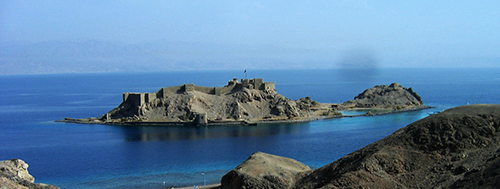
The name of a place mentioned in two different contexts, so that it is impossible to tell if two different places are meant or if they refer to the same place.
1. Ezion-Geber is first mentioned in the Pentateuch as one of the camping stops on Israel's journey from Egypt to the Promised Land (Num 33:35-36; Deut 2:8). The paucity of details in the narrative precludes the probability of identifying the location.

2. A location "near Elath in Edom, on the shore of the Red Sea," (1 Ki 9:26; 2 Chron 8:17) where Solomon first attempted, in cooperation with Hiram, to establish a merchant navy to take advantage of the east-west trade in the south. It may have been through these trading activities that the queen of Sheba came to hear of Solomon and then decided to travel to Jerusalem to check things out for herself (2 Chron 9:1), but it cannot be certain. Jehoshaphat attempted to follow in his great grandfather's footstep, building "a fleet of trading ships to go to Ophir for gold, but they never set sail—they were wrecked at Ezion Geber" (1 Ki 22:48). 2 Chron 20:35-37 supplies more details to explain the tantalizing question of what happened:
Jehoshaphat king of Judah made an alliance with Ahaziah king of Israel, who was guilty of wickedness. He agreed with him to construct a fleet of trading ships. After these were built at Ezion Geber, Eliezer son of Dodavahu of Mareshah prophesied against Jehoshaphat, saying, "Because you have made an alliance with Ahaziah, the Lord will destroy what you have made." The ships were wrecked and were not able to set sail to trade.
The exact location of this port remains uncertain despite decades of search and debate. Scholarly attention is focused on two candidates both located at or near the northern end of the Gulf of Elath: Tell-el-Kheleifeh and the island Jezirat Far'on ("Pharaoh's Island").

Pharaoh's Island

©ALBERITH
160116lch